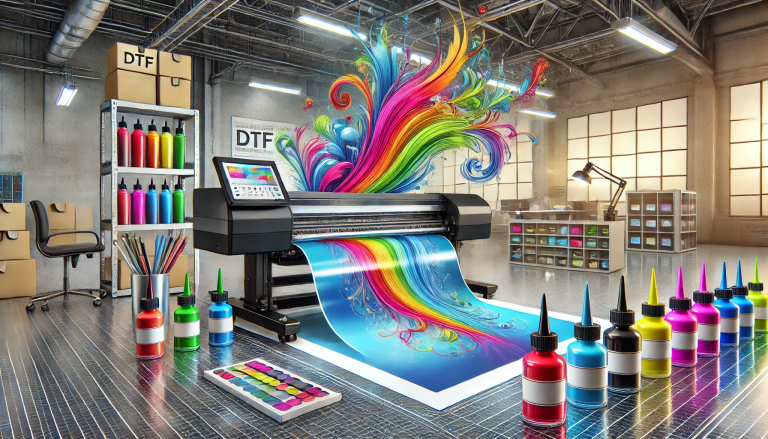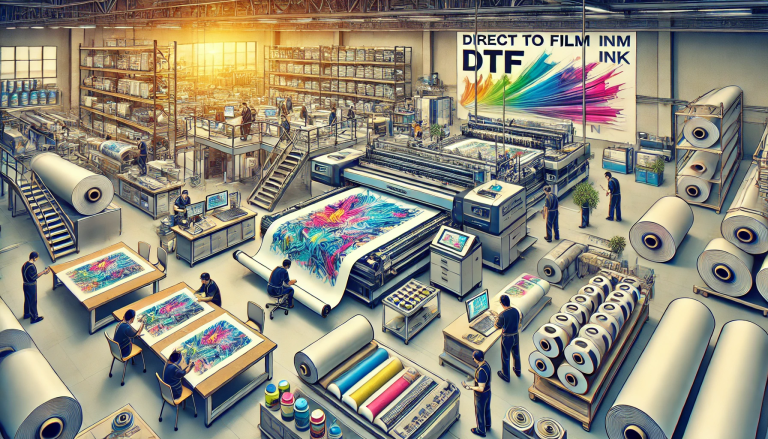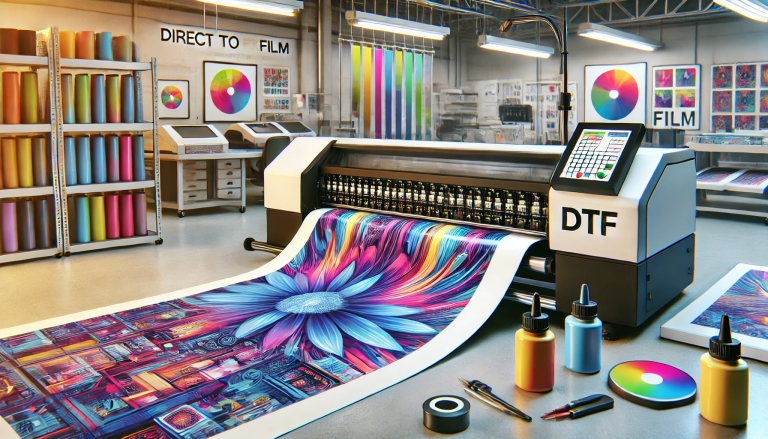“Exploring the Differences Between White and Black DTF Powder” -MAXDTF- Direct to Transfer UV DTF Decal Supplier, Direct to Transfer UV DTF Decal Supplier, Made in China
Introduction
Direct to Film (DTF) printing has revolutionized the world of garment decoration, providing a versatile and efficient way to transfer designs onto various fabrics. One crucial aspect of DTF printing is the type of powder used during the process. Two common variants are white and black DTF powders. In this blog post, we’ll delve into the differences between these two powders, understanding their characteristics, applications, and advantages.
Understanding DTF Printing
Before we dive into the differences between white and black DTF powders, let’s briefly understand DTF printing. DTF printing involves transferring a design from a special film to a fabric using heat and pressure. The process includes applying adhesive ink onto the film, curing it, and then adding a powder layer that adheres to the ink. This powder layer helps transfer the design onto the fabric during the heat press stage.
White DTF Powder: Characteristics and Applications
White DTF powder is typically a fine, white powder that plays a crucial role in the DTF printing process. Its primary purpose is to ensure the ink adheres properly to the fabric and maintains the design’s integrity. Here are some key characteristics and applications of white DTF powder:
- Adhesion: White DTF powder enhances the adhesive properties of the ink, allowing it to stick firmly to the fabric.
- Color Vibrancy: White DTF powder contributes to the vibrancy of the colors, ensuring that the design looks crisp and appealing.
- Wide Fabric Compatibility: White DTF powder is versatile and suitable for a variety of fabric types, making it a popular choice among DTF printers.
- Light Fabrics: White DTF powder is commonly used when printing on light-colored fabrics, as it helps the colors stand out vividly.
- Underbase for Dark Fabrics: In some cases, white DTF powder can be used as an underbase when printing on dark fabrics, helping to ensure the design’s opacity and brightness.
Black DTF Powder: Characteristics and Applications
Black DTF powder, on the other hand, is specifically designed for dark-colored fabrics. It serves a unique purpose in DTF printing and has distinct characteristics:
- Opacity: Black DTF powder is highly opaque, which is crucial when printing on dark fabrics. It helps block the fabric’s color from showing through the design, maintaining its true colors.
- Contrast Enhancement: By effectively covering the fabric’s color, black DTF powder enhances the contrast and visibility of the design.
- Dark Fabrics: Black DTF powder is primarily used when printing on dark-colored fabrics to ensure the design’s quality and visibility.
- Focused Application: Unlike white DTF powder, which is more versatile, black DTF powder is mainly used for specific applications.
Conclusion
In the world of DTF printing, the choice between white and black DTF powders depends on the type of fabric being used and the desired design outcome. White DTF powder offers improved adhesion, color vibrancy, and versatility for light fabrics, while black DTF powder provides opacity and contrast enhancement for dark fabrics. Both powders play vital roles in achieving high-quality, durable, and visually appealing DTF prints, catering to different design needs and fabric choices. Understanding these differences empowers DTF printers to make informed decisions and create stunning designs that leave a lasting impression.





